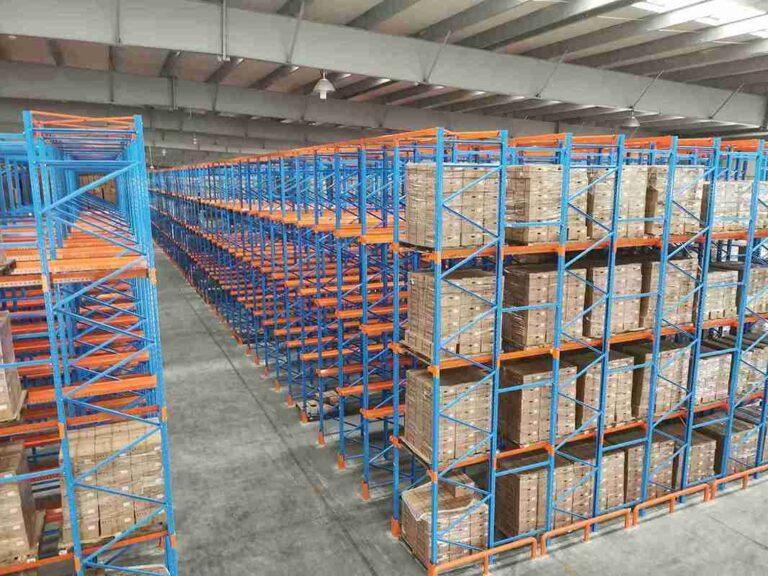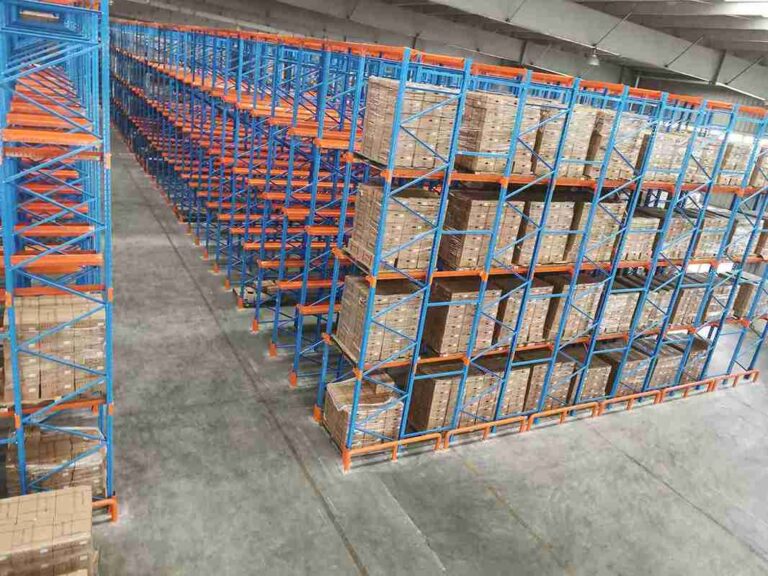📐 "First 50 Enterprise Queries Get Custom 3D Warehouse Design" Plan

Introduction: Revolutionizing Warehouse Storage Efficiency
In an era where every square foot of warehouse space translates directly into operational costs, the drive-in racking system has emerged as a game-changing high-density storage solution. Unlike conventional selective pallet racking, this system allows forklifts to drive directly into the storage structure, dramatically increasing storage capacity while keeping costs under control.
For businesses managing large inventories with limited SKU variety—such as beverage distributors, cold storage facilities, and bulk retailers—the drive-in racking system offers an unbeatable combination of space optimization, cost efficiency, and operational simplicity.
This in-depth guide explores every aspect of drive-in racking systems, from structural design and benefits to industry-specific applications, cost comparisons, and future advancements. By the end, warehouse managers and logistics professionals will have a clear understanding of whether this high-density storage solution aligns with their operational needs.

H1: What Is a Drive-In Racking System?
A drive-in racking system is a high-density pallet storage solution where forklifts enter the rack structure to store and retrieve pallets. Unlike traditional racking, which requires aisles for every row, this system eliminates unnecessary aisles, increasing storage capacity by up to 75%.
H2: How Does a Drive-In Racking System Work?
-
LIFO (Last-In, First-Out) Principle: The most recently stored pallet is the first to be retrieved.
-
Forklift-Accessible Design: Operators drive directly into the storage lanes, reducing aisle space.
-
Structural Integrity: Heavy-duty rails and backstops ensure safe pallet placement.
H2: Key Components of a Drive-In Racking System
-
Heavy-Duty Upright Frames – Provide vertical support for stacked pallets.
-
Load Beams – Reinforced horizontal beams that hold palletized goods.
-
Guide Rails – Direct forklifts safely into storage lanes.
-
Backstops & Wheel Guards – Prevent pallets from being pushed too far into the system.
H1: Top 5 Benefits of a Drive-In Racking System
H2: 1. Unmatched Storage Density
By minimizing aisle space, a drive-in racking system can store 60-75% more pallets than traditional selective racking. This makes it ideal for warehouses with limited floor space but high storage demands.
H2: 2. Lower Cost Per Pallet Position
Since fewer structural materials are required compared to multi-aisle systems, businesses save significantly on upfront costs. For budget-conscious operations, this makes the drive-in racking system one of the most cost-effective high-density solutions.
H2: 3. Ideal for Bulk & Cold Storage
-
Cold Storage Warehouses: Reduces energy costs by maximizing space efficiency.
-
Beverage & Food Distribution: Perfect for large quantities of identical SKUs.
-
Seasonal Inventory: Excellent for retailers with high-volume holiday stock.
H2: 4. Faster Loading & Unloading
With fewer aisles, forklift operators spend less time maneuvering and more time moving goods.
H2: 5. Durability & Low Maintenance
Constructed from high-strength steel, a well-designed drive-in racking system can last decades with minimal upkeep.
H1: Drive-In Racking System vs. Other High-Density Storage Solutions
H2: Drive-In vs. Push-Back Racking
| Feature | Drive-In Racking System | Push-Back Racking |
|---|---|---|
| Storage Method | LIFO | LIFO |
| Storage Density | High | Very High |
| Cost | Lower | Higher |
| Retrieval Speed | Moderate | Faster |
H2: Drive-In vs. Pallet Flow Racking
-
Drive-in racking system: Best for LIFO operations (e.g., non-perishable bulk goods).
-
Pallet flow racking: Uses gravity rollers for FIFO access (ideal for perishables).
H2: Drive-In vs. Mobile Racking
-
Mobile racking offers higher selectivity but at 3-4x the cost of a drive-in racking system.
H1: Best Applications for a Drive-In Racking System
H2: 1. Cold Storage & Frozen Food Warehousing
-
Energy efficiency: Fewer aisles mean less cooled air loss.
-
High-density storage: Maximizes space in temperature-controlled environments.
H2: 2. Beverage & Alcohol Distribution
-
Perfect for uniform pallet sizes (e.g., beer, wine, spirits).
H2: 3. Retail & E-Commerce Fulfillment
-
Seasonal stock management: Efficiently stores holiday inventory surges.
H2: 4. Manufacturing & Raw Material Storage
-
Bulk component storage: Ideal for automotive, construction, and industrial suppliers.
H1: Cost Analysis – Is a Drive-In Racking System Worth It?
H2: Upfront Costs vs. Long-Term ROI
-
Lower initial investment than automated systems.
-
Higher ROI due to increased storage capacity.
H2: Maintenance & Lifespan
-
Galvanized steel options resist rust and corrosion.
-
Minimal moving parts reduce long-term maintenance costs.
H1: Installation & Safety Best Practices
H2: Proper Installation Guidelines
-
Professional assembly required for structural stability.
-
Must comply with OSHA & ANSI safety standards.
H2: Safety Tips for Operators
-
Forklift training is mandatory to prevent accidents.
-
Regular pallet inspections prevent collapses.
H1: Future Trends in Drive-In Racking Systems
-
Semi-automated drive-in systems (hybrids with shuttle technology).
-
AI-powered inventory tracking for smarter storage management.
Conclusion: Is a Drive-In Racking System Right for Your Business?
For warehouses handling large volumes of similar products, a drive-in racking system remains one of the most cost-efficient, space-saving storage solutions available. While it may not suit operations requiring FIFO access, its high-density, budget-friendly advantages make it a top choice for bulk storage, cold storage, and seasonal inventory.
Before investing, businesses should evaluate their SKU profile, retrieval needs, and budget constraints to determine if a drive-in racking system aligns with their logistics strategy.
FAQs About Drive-In Racking Systems
1. What is the maximum height for a drive-in racking system?
Most systems support up to 40 feet, but custom-engineered designs can go higher.
2. Can a drive-in racking system be used for FIFO inventory?
No, it operates on a LIFO system. For FIFO, consider pallet flow racking.
3. How many pallets can fit in a drive-in racking system?
A typical 4-level bay can hold 6-12 pallets per lane, depending on depth.
4. What forklift types work with a drive-in racking system?
Standard counterbalance forklifts are most common, but narrow-aisle trucks can also be used.
5. Does a drive-in racking system require special flooring?
Yes, floors must be level and reinforced to handle heavy loads.



